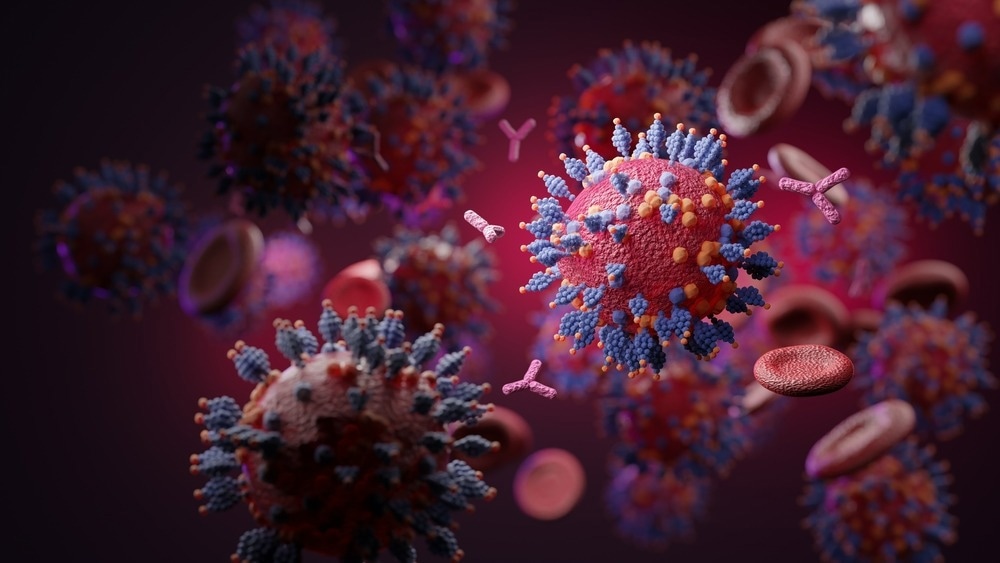In a recent study posted to bioRxiv*, researchers reported that the severe acute respiratory syndrome coronavirus 2 (SARS-CoV-2) Omicron XBB.1.5 variant evades neutralizing response elicited by bivalent vaccine boosters.
 Study: Waning Immunity Against XBB.1.5 Following Bivalent mRNA Boosters. Image Credit: Fit Ztudio/Shutterstock
Study: Waning Immunity Against XBB.1.5 Following Bivalent mRNA Boosters. Image Credit: Fit Ztudio/Shutterstock

 *Important notice: bioRxiv publishes preliminary scientific reports that are not peer-reviewed and, therefore, should not be regarded as conclusive, guide clinical practice/health-related behavior, or treated as established information.
*Important notice: bioRxiv publishes preliminary scientific reports that are not peer-reviewed and, therefore, should not be regarded as conclusive, guide clinical practice/health-related behavior, or treated as established information.
Background
SARS-CoV-2 Omicron XBB is a hybrid lineage derived from two BA.2 sub-lineages. The XBB.1 sub-lineage carries a G252V substitution, while XBB.1.5 carries G252V and F486P substitutions. The frequency of the XBB.1.5 variant increased rapidly, making it the predominant variant in New England. The bivalent messenger ribonucleic acid (mRNA) vaccine boosters amplify neutralizing antibody (nAb) response to several variants, but less is known about its durability.
The study and findings
The present study evaluated immune responses in individuals boosted with bivalent mRNA vaccines. Thirty individuals who received Pfizer or Moderna’s bivalent mRNA vaccine boosters were included. Subjects were excluded if they had a past SARS-CoV-2 infection, tested positive for anti-nucleocapsid antibodies, or received immunosuppressants.
A pseudovirus neutralization assay was used to determine nAb titers against SARS-CoV-2 variants, including WA1 strain and BQ.1.1, BA.2, XBB.1, BA.5, and XBB.1.5 variants. Intracellular cytokine staining was used to estimate the cluster of differentiation 4-positive (CD4+) and CD8+ T cell responses. Assays were performed at baseline (pre-boost), three weeks, and three months after booster administration.
The median nAb titers at baseline were 5015, 104, 49, and 74 against WA1 strain, BA.5, XBB.1, and XBB.1.5, respectively, in individuals seronegative for SARS-CoV-2 nucleocapsid. These titers increased to 25,954 (WA1), 2285 (BA.5), 128 (XBB.1), and 137 (XBB.1.5) by week 3 post-boost. The median titers to WA1, BA.5, XBB.1, and XBB.1.5 decreased by 1.2-, 1.8-, 2.1-, and 1.8-fold, respectively, relative to week 3 titers.
Median CD8+ T cell responses to WA1 and XBB.1.5 were 0.08% and 0.059% pre-boost and 0.107% and 0.106% after three months, respectively. Likewise, median CD4+ T cell responses against WA1 and XBB.1.5 at baseline were 0.098% and 0.065% and 0.099% and 0.09% at month 3 post-boost, respectively.
Conclusions
The findings indicate that SARS-CoV-2 Omicron XBB.1.5 variant significantly evades nAbs but not T-cell responses following bivalent mRNA booster vaccination. nAb titers against XBB.1 and XBB.1.5 were comparable, suggesting that the additional F486P substitution in XBB.1.5 spike improves transmissibility but not immune evasion.
Notably, nAb titers against the XBB sub-lineages returned to baseline (pre-boost) levels three months after booster administration. This decline in nAb titers was less pronounced for other variants. The low magnitude of nAb response and rapid waning will likely contribute toward reduced effectiveness of bivalent vaccination; nonetheless, T cell responses present pre-boost may still protect against severe COVID-19.

 *Important notice: bioRxiv publishes preliminary scientific reports that are not peer-reviewed and, therefore, should not be regarded as conclusive, guide clinical practice/health-related behavior, or treated as established information.
*Important notice: bioRxiv publishes preliminary scientific reports that are not peer-reviewed and, therefore, should not be regarded as conclusive, guide clinical practice/health-related behavior, or treated as established information.